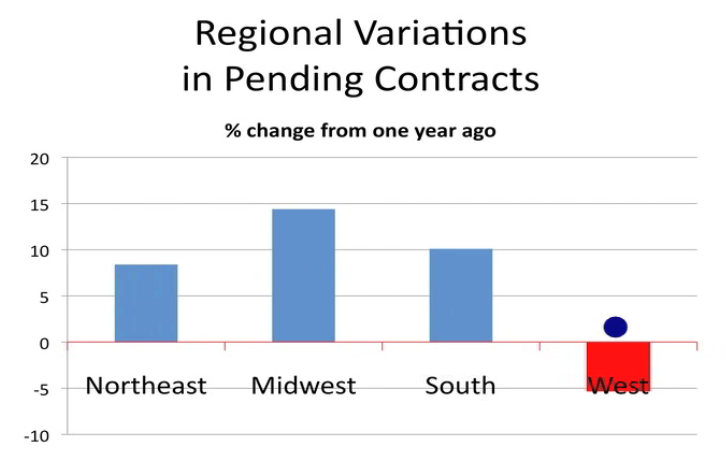The Inman News article below provides interesting national context to the extreme lack of inventory in our local markets.
NAR: Pending sales dip from November to December
BY INMAN NEWS
Despite the month-to-month drop, existing homes under contract were up 6.9 percent from a year ago, making December the 20th month in a row to see an annual gain in pending sales.
NAR’s Pending Home Sales Index, which represents existing-home contracts signed but not yet closed, rose to 106.3 in November before slipping to 101.7 last month. In April 2010, when the federal homebuyer tax credit was still in place, the index hit 111.3, but soon dipped back down.
An index score of 100 is equal to the average level of sales contract activity in 2001, the first year examined by the trade group and a year in which home sales fell in what’s considered a normal range for the current U.S. population. Contracts signed in a month typically close one or two months later.
Although NAR is projecting that home sales will pick up by 9 percent in 2013, tight inventory, paired with near-record low new-home construction levels, is an obstacle to more rapid growth.
The month-to-month dip in the pending sales is not a “statistical fluke,” Yun said, but signals a loss of momentum in home sales. The momentum, however, is inventory-related, he said — demand is still high.
New homes, Yun said, are the solution to the inventory challenge. “True relief to the inventory has to come from new home construction.”
Regionally, the West, with extremely tight inventory, was the only region to see a decrease in pending home sales in December from a year ago with a 5.3 percent drop.
December 2012 year-over-year change in pending sales of existing homes index by region

Source: National Association of Realtors
The Midwest, South and Northeast had year-over-year index increases of 14.4 percent, 10.1 percent and 8.4 percent, respectively, in December.
On a monthly basis, only Midwest’s index increased in December — 0.9 percent. The pending existing-home sales index fell in the West, Northeast and South from November to December 8.2 percent, 5.4 percent and 4.5 percent, respectively, in December from November.
